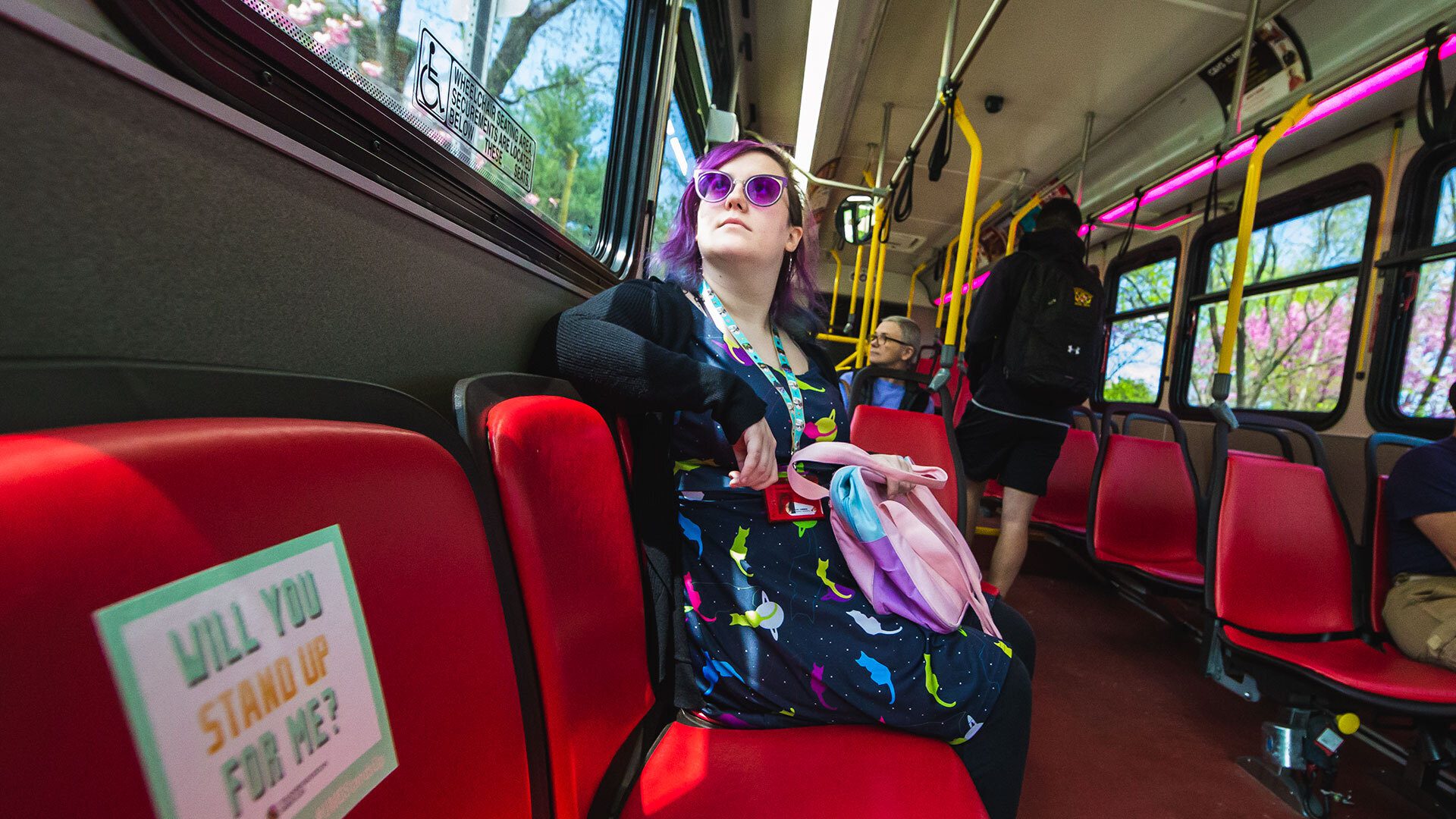- April 18, 2019
- By Annie Krakower
Last semester, Cassidy Henry Ph.D. ’23 was getting acclimated to UMD as a first-year graduate student, frequently taking Shuttle-UM home to their apartment in Adelphi after long days on campus. But the popularity of the route often made it standing room only.
Henry experiences chronic pain but doesn’t use a cane or have visible signs of disability, and they found asking passengers to give up their seats awkward. Riders sitting in the priority seats with headphones in was another impediment to getting a seat. With jolts of pain shooting up their back last year, Henry took to Twitter to vent about the issue.
“It would be great if you guys could design, with disabled students’ help, a campaign that not all disabilities are visible,” Henry tweeted.
The Department of Transportation Services saw the tweet, and now it’s doing just that. Inspired by experiences like Henry’s, a new campaign called “Will You Stand Up for Me?” launched this month to raise awareness about passengers with invisible disabilities. The initiative, which will officially run through the end of the academic year, includes signage in shuttles and “Ask Me for My Seat!” buttons for riders willing to give up their seat to wear.
“Our goal for this campaign is to teach riders who don’t live with a disability that they should think about whether or not they truly need a seat,” said Cara Fleck Plewinski B.M. ’07, assistant director for marketing and communications for DOTS. “And we also want to encourage those who maybe do need a seat to ask for one and not feel shy about doing it, and to know that no explanation is required.”
The Invisible Disabilities Association defines an invisible disability as a physical, mental or neurological condition that limits someone’s movements, senses or activities and that can’t be seen. Symptoms can include debilitating fatigue, pain, cognitive dysfunctions and more.
“If I walked around with a cane or came on in a wheelchair, people would automatically know, this person’s disabled and needs this space,” Henry said. “But a lot of people kind of don’t believe you when you don’t have an actual marker.”
While paratransit is available for Terps with disabilities, an option Henry appreciates, users first need to register with the University Health Center, and the service runs mostly on-campus. The new campaign on Shuttle-UM, set in motion by the President’s Commission on Disability Issues, helps those individuals avoid worrying about getting home.
Besides the decals and buttons, DOTS hopes to integrate information about invisible disabilities in the Campus Connections Guide in coming semesters to keep the initiative going.
“It’s an awareness thing,” Henry said. “If people had an avenue to bring up these things more easily, or know that they can, they can really improve their experience as a student.”
Topics
Campus & CommunityTags
Transportation